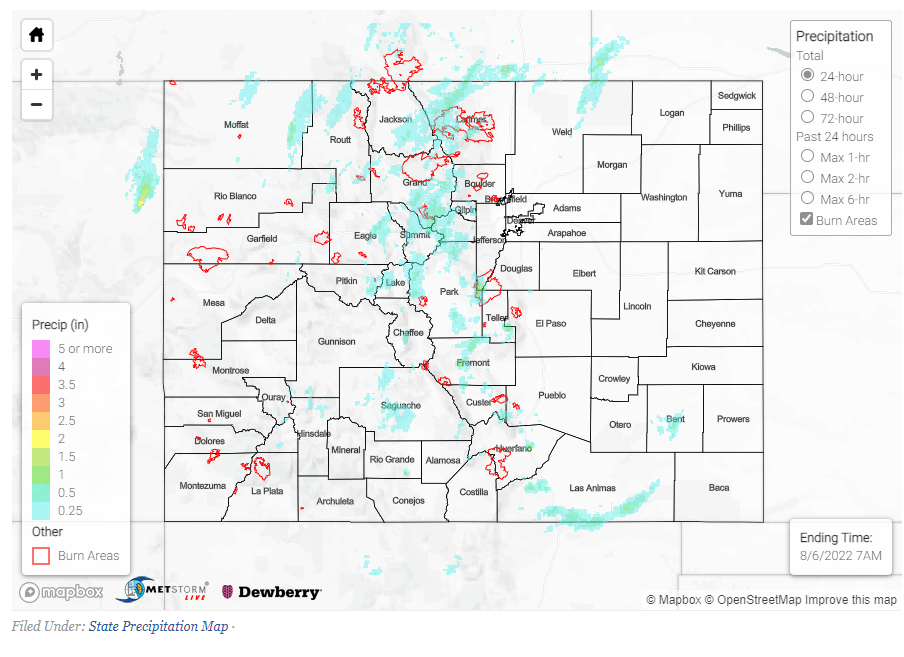Issue Date: Saturday, August 6th, 2022
Issue Time: 10:30 AM MDT
Summary:
Yesterday brought a scattering of flood advisories across the state, mostly in the Front Range and Central Mountains. The Urban Corridor was mostly dry, with most storms staying contained to the mountains. Although there was a landspout near DIA briefly in the afternoon, that was the extent of activity for Denver and the surrounding areas to the east. The Eastern Plains were quite dry, with just a few scattered reports of trace or less than 0.1″. Similarly, the Western Slope saw very little rainfall as well. 45 mph winds accompanied a single flood advisory west of Steamboat Springs, but no flooding or damage was reported.
Moving east of the Northwest Slope, many flood advisories were issued for the Cameron Peak burn scar once again. Parts of the burn scar received up to 1.3” of rainfall over just a few hours, causing a debris flow in Buckhorn Creek and flooding in multiple locations across the area. Reports include:
-Flash flooding near Pingree Park and Buckhorn Mountain, where officials put up barricades in both locations to assist with water overflow
-Multiple reports of flooding and washouts along CR 44H, from Ballard Road to MM30, according to law enforcement. Reports noted a “2–3 foot surge” of water and debris in Buckhorn Creek.
See below for a photo and more information on the flow:
@NWSBoulder multiple homes cut off from Buckhorn road due to major wash outs. RV/Trailer home took on water. Large drainage debris hung up on trees along side Buckhorn Road near Moody Hill Road #COwx pic.twitter.com/oHjX6HQCUz
— Aaron Rigsby (@AaronRigsbyOSC) August 6, 2022
Other totals across the Front Range vary from 0”-0.2”, but some other notable precipitation totals across the mountains include:
-0.73” in Minturn
-1.05” southeast of Denver
-0.58” north of Kremmling
-0.69” southeast of Pueblo
If you observe flooding in your area, remember to use the “Report a Flood” page to make any flood reports when you can safely do so. For precipitation estimates in our area, check out the map below.
